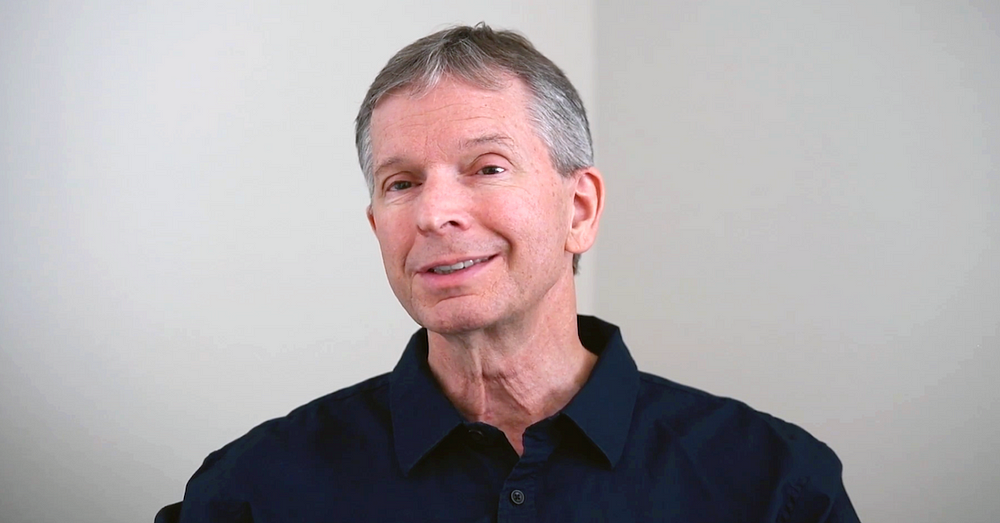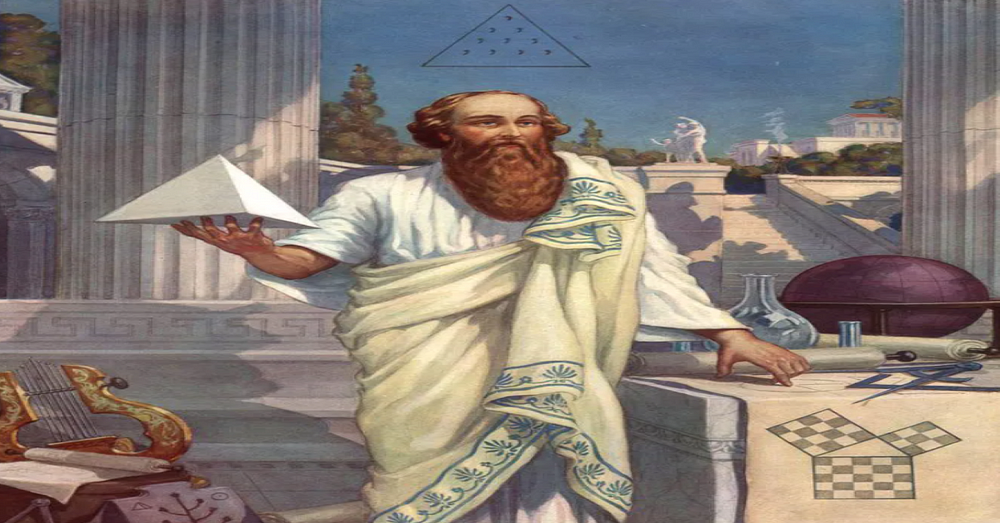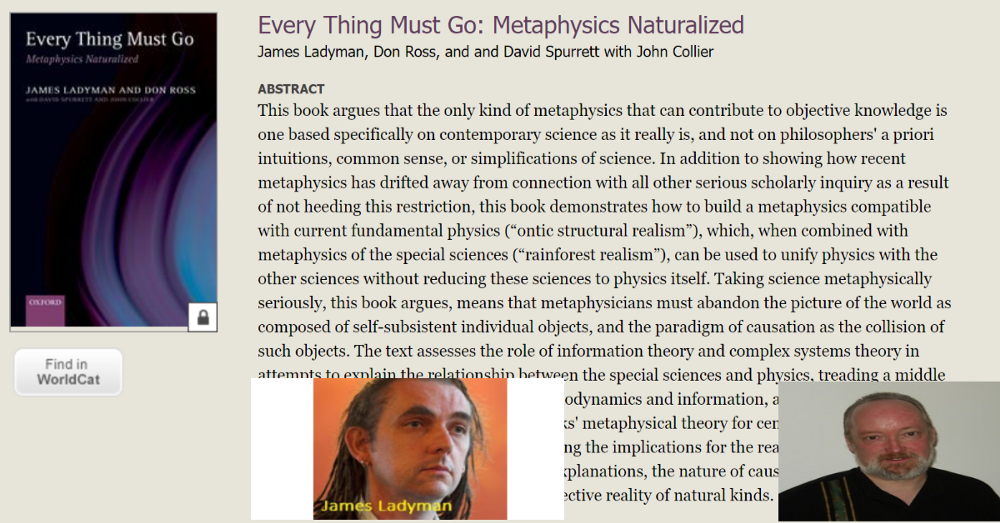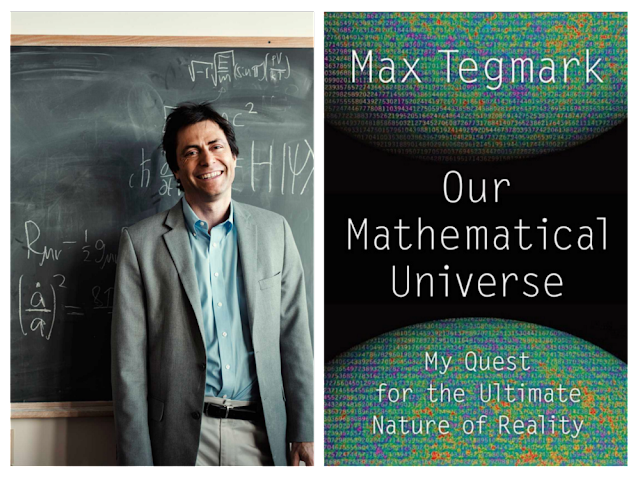Donald Hoffman states that when it comes to a brain or a volleyball, “if you don’t look, it’s not there”. He also believes that “a volleyball no more has a position or momentum when it’s not observed than does an electron”. All this is basically a 21st-century update of Bishop Berkeley’s 18th-century idealism (as Hoffman more or less admits in various places).

“[P]articles are vibrations not of strings but of interacting conscious agents.”
— Professor Donald Hoffman
It’s worth putting Professor Donald Hoffman’s position on volleyballs and brains in its larger context.
Firstly, Hoffman isn’t modest about his “interface theory of perception” (more broadly and philosophically, his idealism). For example, he states that
“[i]t consumes decrepit ontology, preserves methodological naturalism, and inspires exploration for a new ontology”.
Hoffman also compares what he’s doing to what Alan Turing did (see here). What’s more, Hoffman believes that his idealism (or what he calls conscious realism) is a
“vehicle sufficiently robust to sustain the next leg of our search for a theory of everything”.
Now it may not be altogether clear to all readers (from that short quote alone) whether or not Hoffman actually believes that his own idealist philosophy will be that “theory of everything”. Alternatively, is Hoffman simply (or only) claiming that his idealism could be (or actually is) a “vehicle” of such a grand enterprise?
That said, it can easily be shown that the former option is far more likely.
That’s the case because in Hoffman’s philosophy, consciousness must ground any theory of everything. (That will include any theory which will be offered in the future by high-ranking theoretical physicists and/or cosmologists.) After all, Hoffman has explicitly argued that his idealism will “boot up space, time and matter” as well as literally everything else.
The clincher, however, can be found in Hoffman’s following words:
“Spacetime is doomed. It, and its particles, cannot be fundamental in physical theory, but must emerge from a more fundamental theory.”
Hoffman believes that this “more fundamental theory” is, of course, his very own conscious realism — aka, his “scientific” idealism.
Hoffman on Brains

Donald Hoffman is an idealist (or conscious realist) who’s stated that “brains and neurons do not exist unperceived”. That isn’t a claim that our perceptions don’t (as Hoffman puts it elsewhere) “resemble” whatever it is that gives rise to them. It’s a straight claim that brains and neurons don’t exist when unperceived.
Hoffman was at his most Berkeleyan when he wrote this simple line about a brain:
“If you don’t look, it’s not there.”
Yet if you don’t look at what is defined as (to use Hoffman’s word) “phenomenal”, then of course it’s not there when no one is looking at it. That’s true by definition.
Here’s a definition of the word “phenomenon” (i.e., if only as used in philosophy and science):
“A phenomenon is an observable event. [] In modern philosophical use, the term phenomena has come to mean things as they are experienced through the senses and processed by the mind as distinct from things in and of themselves (noumena) [].”
In addition:
“In scientific usage, a phenomenon is any event that is observable, including the use of instrumentation to observe, record, or compile data.”
Hoffman doesn’t have much time for physicalism (or materialism), yet a physicalist and even a naïve realist can accept most — or even all — of the definitions above. (They may even accept Hoffman’s use of the word “phenomenal”.) That is, they will accept that a phenomenal brain is only there when someone is looking.
[Naive realism has just been mentioned. Hoffman seems to believe that all positions on “reality” which aren’t his own — or which aren’t idealist — are examples of naïve realism.]
However, such people will not also accept that that the physical brain is only there when someone is looking.
Of course Hoffman collapses this distinction — but at least it should be made clear.
Hoffman on Volleyballs
Hoffman makes his Berkeleyan position even clearer in the following passage:
“The phenomenal volleyball isn’t there when you don’t look, so it isn’t off-white or any other color. Nor is it round or soft or leathery.”
Then he immediately adds the following contemporary scientific gloss on his idealist position:
“The relational volleyball is circuits and software, and it isn’t literally off-white either. There may be portions of the software whose intent is to spray photons on your eyes such that you will construct an off-white phenomenal volleyball. But this software isn’t any color at all. And the color of the circuits is irrelevant to the color of the phenomenal volleyball[].”
Again, if even a physicalist can accept Hoffman’s term “phenomenal volleyball”, then what he wrote will be true by definition.
The reader will have noted Hoffman’s use of the words “circuits” and “software” in the passage above.
Hoffman often — very often — uses technical terms taken from the world of computers or from computer science. (One can even say that Hoffman is hooked on such technical terms.) So perhaps it’s the case that these technical terms from computer science tie Hoffman up in various philosophical knots.
Firstly, does Hoffman use such terms as “circuits”, “software”, “icons” and “interface” analogically or metaphorically?…
No; he doesn’t.
After all, when Hoffman writes “[t]he relational volleyball is [my italic] circuits and software”, that statement isn’t meant to be an analogy or a metaphor. Hoffman is arguing that the relational volleyball literally is circuits and software. (Note that Hoffman isn’t referring to a computer-generated image of a volleyball on a computer screen. He’s referring to a real volleyball which one can literally kick.)
So let’s take a specific example of Hoffman’s fixation on terms from computer science.
Hoffman often refers to the “icon interface on your computer” as a means to get his idealist point across about the icons in human consciousnesses.
Yet the icon interfaces of computers have all been designed by human persons to “guide” human users. No one has ever claimed — or even believed — that an icon of a trashcan is identical to — or even resembles — the “unseen circuits and software” found inside a computer.
So Hoffman’s position basically amounts to arguing that only x is x. (Or: Only x can be x.)
More accurately, the upshot of Hoffman’s argument is that only experience x can be like (or “resemble”) experience x. (This argument is taken directly from Bishop Berkley.) That is, only that which is phenomenal can also be phenomenal.
But who’s ever argued otherwise?
Another way of putting this is to say that a “phenomenon” is by definition something that only belong to minds or to conscious experiences. That’s essentially how that word was defined by Immanuel Kant some 240 years ago. More clearly, in Kant’s scheme we have phenomena and we also have a noumena. So obviously phenomena aren’t noumena.
But no one has ever claimed otherwise.
[Of course that’s if readers — and others — accept these Kantian terms and philosophical distinctions at all.]
This means that if a volleyball is entirely defined as a phenomenal volleyball, then by definition it can’t exist as a volleyball if no one is looking at it. Unless, here again, Hoffman simply means phenomenal volleyball by the single word “volleyball”. If Hoffman does mean that, then his claim is true by definition.
Hoffman then compares a “phenomenal volleyball” to an electron.
Hoffman Compares a Volleyball To An Electron
To give a flavour of where Hoffman is going with all this, it’s worth noting that Hoffman’s position on a volleyball must be — at least partly — a result of a position he expressed in the following (to be rhetorical for a moment) almost meaningless, jargon-infested passage:
“We show that one particular object, the quantum free particle, has a wave function that is identical in form to the harmonic functions that characterize the asymptotic dynamics of conscious agents; particles are vibrations not of strings but of interacting conscious agents.”

It’s also important to note here that Hoffman began using mathematics — or mathematical technical terms — on a large scale and as an seemingly essential part of his philosophy when he started working with the mathematician Chetan Prakash. And, from then on, Hoffman began using copious mathematical terms (i.e., in his idealist philosophy) as if they were round shapes being pushed into square holes.
In direct relevance to an electron, Hoffman writes:
“A volleyball no more has a position or momentum when it’s not observed than does an electron. Only in the act of observation do you construct a phenomenal volleyball with a position, motion, color, and shape. Similarly, only in the act of observation is an electron constructed with a position, or momentum, or other dynamical properties. All phenomena are constructed by observation, whether quantum phenomena or volleyball phenomena.”
There’s a severe problem with comparing a volleyball to an electron.
Even if we accept that a phenomenal volleyball is, well, a phenomenal volleyball, then Hoffman’s comparison to an electron is not at all accurate.
It’s true that a phenomenal volleyball needs to be perceived. However, arguably it still exists as a physical object when not perceived. Yet when it comes to an electron, the situation is very different indeed.
According to the Copenhagen interpretation (as well as most other interpretations) of quantum mechanics, nothing (much?) can be said about an electron when it’s not being indirectly observed or when it’s not part of an experimental setup. Indeed the experimental setup largely determines what the electron is taken to be (or what is said about it). This essentially mean that if an electron isn’t part of any experimental setup, then it isn’t really anything at all. (What is this electron that exists apart from an experimental setup and all indirect observations? Tell me something about it.)
On the other hand, much can be said about any given volleyball even when it isn’t being observed.
For a start, one can still know (or have a good guess) where it still is. One can also know that it must have the same shape, size and weight as it did when observed.
Of course all these properties can also be deemed to be phenomenal — at least on Hoffman’s Berkeleyan reading.
[Hoffman mentions and quotes Berkley’s idealist position favourably — see here and here. For example, he writes: “Resemblance between the phenomenal and relational realms: I argue that there need be no resemblance. But Berkeley has an ingenious argument that goes much further, and is probably valid.”]
But isn’t there still some x which is in a place and which has a given weight, shape and size?
In terms of the “off-white” colour mentioned by Hoffman, however, the volleyball may not have that colour when not observed. (Some will say that it does. Others will say that it doesn’t. Yet virtually no one offers idealist reasons for either position.) But should we go as far as Bishop Berkeley (1685–1753) and say the same things about location, weight, shape and size (see here)?
Hoffman does.
Now in order to make more sense of Hoffman’s position on brains and volleyballs, it will help to tackle his notion of an “arbitrary representation”.
Hoffman on Arbitrary Representations
One central point which Hoffman advances is that even though he accepts that we have (what he calls) “representations” of this volleyball, those representations need not — and indeed do not — resemble anything in the “objective world”. Or, more accurately, they don’t resemble whatever it is that (as it were) underpins this volleyball in what Hoffman calls “the relational realm”.
Hoffman himself writes:
“If ‘well adapted’ doesn’t mean ‘resembles,’ then what does it mean? It means a systematic but arbitrary relation. Our perceptual experiences are well adapted to the relational realm because they provide a systematic but arbitrary guide to those aspects of the relational realm that are critical to our needs and our survival — just as the icon interface on your computer is well adapted because it provides a systematic but arbitrary guide to the computer’s unseen circuits and software.”
Sense now has to be made of Hoffman’s word “arbitrary”.
[“Arbitrary” = df. “existing or coming about seemingly at random or by chance or as a capricious and unreasonable act of will”. Or: “arbitrary” = df. “not fixed by rules, but left to one’s judgment or choice; discretionary”.]
Even if the word “arbitrary” simply means could have been otherwise (or something similar), then it still seems to be too strong. That is, if the relational realm might have been represented (or whichever the correct word is) differently, then does that still automatically mean that all representations are arbitrary?
If Hoffman simply means (as discussed above) that that what is phenomenal can’t also be relational (by definition and an idea Hoffman takes from both Bishop Berkeley and Immanuel Kant), then, in that strict sense, x can’t be y. But simply because x can’t actually be y, then why does it follow that this relation (whatever it is) between x and y should also be arbitrary?
Take this loose comparison.
When I put a sandwich in the freezer, it freezes. The sandwich and the freezing process aren’t the same thing . However, the relation between the sandwich and the freezing process (in the freezer) certainly isn’t arbitrary.
Similarly, a phenomenal representation of something that isn’t itself a phenomenal representation needn’t be arbitrary simply because the representation and the represented aren’t one and the same thing.
In addition, there may be many reasons as to why the represented x is represented (in the way it is actually represented) by y. Those good reasons would still hold even though representation y isn’t the same thing as the represented x.
In terms of Hoffman’s example of a volleyball. There may be other reasons (other than what is conducive to survival) as to why members of the species homo sapiens represent this volleyball the way they do.
So Hoffman really gives the game away when he uses the word “resembles”. He writes:
“If ‘well adapted’ doesn’t mean ‘resembles,’ then what does it mean? It means a systematic but arbitrary relation.”
The words “systematic but arbitrary relation” can’t possibly mean well adapted. If a systematic but arbitrary relation is anything, then it’s a single characterisation of something that’s merely connected to being well adapted — it isn’t its meaning.
So we still need to why this supposedly arbitrary relation also leads to being well adapted (more of which later).
In addition, of course the word “resembles” doesn’t mean identical to. That is, if y resembles x, then that doesn’t also mean that y is identical to x.
However, Hoffman may be right to argue that the idea of resemblance doesn’t work at all in his case of some given x in the relational realm and its representation in the phenomenal realm. Indeed Kant and Kantians — long before Hoffman — have deemed the notion of any resemblance between anything noumenal and anything phenomenal to be confused.
Hoffman also makes much of successful adaptation not (always?) coming alongside what he calls “truthful perceptions”.
Perceptual Adaptation and Truth?

Hoffman writes:
“Our perceptual experiences are well adapted to the relational realm because they provide a systematic but arbitrary guide to those aspects of the relational realm that are critical to our needs and our survival.”
This question now needs to asked:
How are our perceptual experiences “well adapted” to the world at all?
How does that adaptation work without what Hoffman calls resemblance? It’s certainly the case that resemblance may not be required. However, we need to know how our perceptual experiences are well-adapted in ways which don’t involve “reality”, “truth”, “resemblance”, accuracy, etc. In other words, what is the precise relation between our perceptual experiences and Hoffman’s relational realm?
Hoffman only seems to answer that question negatively.
The argument is that the relation between our perceptual experiences and “reality” needn’t be — or actually isn’t — one of resemblance, truth, correspondence, accuracy, etc. Instead, Hoffman focusses on filtering out superfluous data in order to survive. Yet this hints at the idea that the perceptions or representations which are left (i.e., after the filterings) may still be of a non-idealist reality. Indeed doesn’t the very idea of filtering assume a non-idealist reality?
But, again, what is the precise relation?
Even if perceptual experience x doesn’t resemble y, then why does it have the character that it does have? Indeed what evolutionary role does perception x not resembling y have? (Again, Hoffman explains all this is terms of the evolutionary disadvantage of, basically, sensory overload.) And why does perception x have the character it does have in the first place?
Another way of putting all this is to argue that if our perceptual experiences are only (as Hoffman puts it) “critical to our needs and our survival”, then how and why are they so? That is, how is such survival brought about without any resemblance, correspondence, truth. accuracy or whatever?
So Hoffman tells us that all species don’t need truth when it comes to perception. But we are left in the dark as to what species do need. We can’t simply be happy with phrases like
“[p]erception guides adaptive behavior; it does not estimate a preexisting physical truth”
without also being informed as to why we have given perceptions and what their precise relation is to… what? Reality? The physical world. Hoffman’s (non-physical) relational realm?
Hoffman then writes:
“More information requires, in general, more time to obtain and process. But in the real world where predators are on the prowl and prey must be wary, the race is often to the swift. [] So natural selection tends to favor perceptual systems that, ceteris paribus, take less time. One way to take less time is, again, to see less truth, especially truth that is not informative about fitness.”
Interestingly, there’s an (implicit) acknowledgement of the (for want of better words) external world (i.e., something outside consciousness) in that passage. Indeed Hoffman’s phrase “less truth” implies some truth. That is, the truth that is left may well be conducive to survival — even if the complete truth isn’t. And surely that works against Hoffman’s idealism (or his conscious realism).
[See my ‘A Contradiction in Donald Hoffman’s (Idealist) Fitness-Beats-Truth Theorem’. This essay tackles Hoffman’ implicit acceptance of a non-idealist physical world.]
Hoffman seems to be aware of this counterargument when he quotes the psychologist James J. Gibson in the following manner (as expressed in Gibson’s ‘The Ecological Approach to Visual Perception’):
“[I]n Gibson’s ecological theory of perception, our perceptions primarily resonate to ‘affordances,’ those aspects of the objective world that have important consequences for fitness [].”
Yet Hoffman believes that there are no affordances — at least not if they’re based on any “resemblances” to, truths about, accuracies in relation to, etc. what Hoffman calls the “objective world”. Alternatively put: perceptions can “resonate to affordances” without any need for resemblance, truth, accuracy, etc. In the idealist picture, then, affordances need have no relation at all to anything outside consciousness.
Yet despite his book title, rhetorical statements about “reality”, etc., Hoffman actually does believe in the objective world. It’s just that Hoffman’s objective world isn’t what he believes most people take it to be. (Hoffman nearly always takes his opponents to be naïve realists.) To Hoffman, objective reality is, in fact, an idealist reality.
In fact Hoffman repeatedly uses the term “objective reality” (which few contemporary philosophers and scientists use — at least not in their technical work) without ever really telling us what he means by that term. Here’s another example:
“[T]he idea is that natural selection has not shaped our perceptions to be insights into the true structure and causal nature of objective reality, but has instead shaped our perceptions to be a species-specific user interface, fashioned to guide the behaviors that we need to survive and reproduce.”
This, again, is Hoffman acknowledging objective reality without telling us what he takes it to be. Perhaps that’s because if he did so, then his idealism would have to embrace something outside consciousness (or consciousnesses) and thus render it contradictory.
So how can an a idealist (or conscious realist) accept any objective reality at all? That is, how can any idealist accept an objective reality if that reality is meant to be something outside consciousness or consciousnesses?
Of course it may be that to Hoffman objective reality is his “relational reality” (which is very similar to Kant’s noumenal realm). But Hoffman hardly ever explicitly states that. And even if he did, then he would be using the term “objective reality” in a way that hardly any scientist, philosopher or layperson uses it. Hoffman may be very happy with that fact. And of course he’s free to use an old term in his own new way. Indeed since Objective Idealists and other idealists have used the term “objective reality” to refer to something that is an exclusive matter of consciousness, consciousnesses, Cosmic Consciousness, Geist or whatever, then that may actually be what Hoffman is doing.
Hoffman also tells us that the cognisance — or experience — of the (to use a philosophical phrase) Kantian manifold (or Hoffman’s “every bit of information”) has led to species-death. (How could this be known anyway?) Yet we aren’t told about the truth-remainder (which Hoffman implicitly accepts) and its relation to… what?
So here again it can be said that even though perceptual experiences can’t be identical to what they are experiences of, then that doesn’t also mean that they are arbitrary.
Hoffman goes into more detail when he writes that
“[e]xperiences need not resemble the relational realm to be well adapted, they need only be a useful guide for behaviour”.
Why are such experiences “useful”? And useful in which respects?
One obvious riposte to Hoffman’s statement above is to argue that experiences of volleyballs, brains or anything else are a “useful guide for behaviour” precisely because they do “resemble”… something outside consciousness.
[The existence of a relational realm needn’t be accepted here. Bear in mind that the term “relational realm” is Hoffman’s own.]
So all anyone needs to argue is that his/her perceptions (or experiences) of a volleyball, a brain or anything else must have strong connections to things (whatever they are) outside consciousness — or things outside a collective of what Hoffman calls conscious agents.
Of course Hoffman, as an idealist, must reject that claim.
****************************











